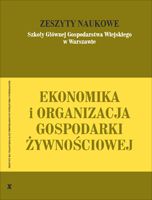Main Article Content
Information is based here on empirical data of 810 farms selected at random in 1992 and before. This is an estimate of differences in economic forming effectiveness and an attempt to define same of its causes. The analysis has been based on indices from the quotient of earnings in money from agricultural economic activity to money spent on this activity. The numerator is the gross final product, whereas the denominator - the amount of money spent (without own work value and depreciation). Thus calculated indices for each farm provide a basis for analytical division of the whole set into 4 groups. In group I there are farms having its index of economic effectiveness for 1992 below l. In groups II, III and IV these indices remain within intervals: 1-2; 2-3 and over 3. Average effectiveness in management of resources discussed here in current annual prices dropped from 3.22 in 1987 to 1.82 in 1992. But in comparable prices expenses for economic activity dropped some 7 .9%, whereas the income only by 4.6%. This means that despite the very deep drop in economic effectiveness, there is an increase in technological effectiveness. All problems named here and neglected, apart from some disturbing phenomena, allow for some optimism, because the analysed here index of farming effectiveness is distinctly and positively correlated with the increasing farm area of arable land. Thus, it can be assumed that family farms of a greater area and quite big adjusted better to changing economic conditions for forming over the period discussed.





